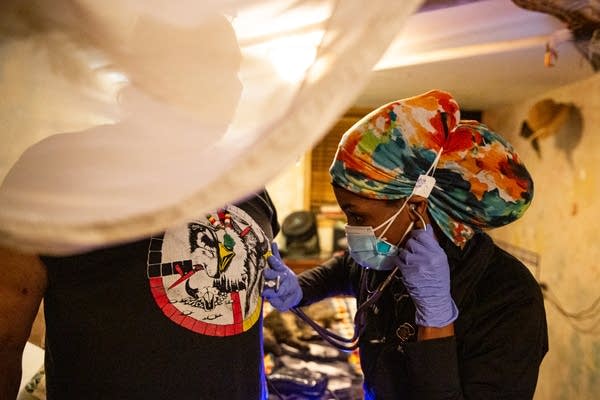In the ICU and at George Floyd Square, one nurse fights two pandemics

Jeanette Rupert uses her stethoscope to listen to Bob Hull's breathing in the bedroom of his home near George Floyd Square in Minneapolis on Dec. 16. Rupert checks in on Hull frequently to help him understand how to properly use his medications and check vitals.
Evan Frost | MPR News
Go Deeper.
Create an account or log in to save stories.
Like this?
Thanks for liking this story! We have added it to a list of your favorite stories.


